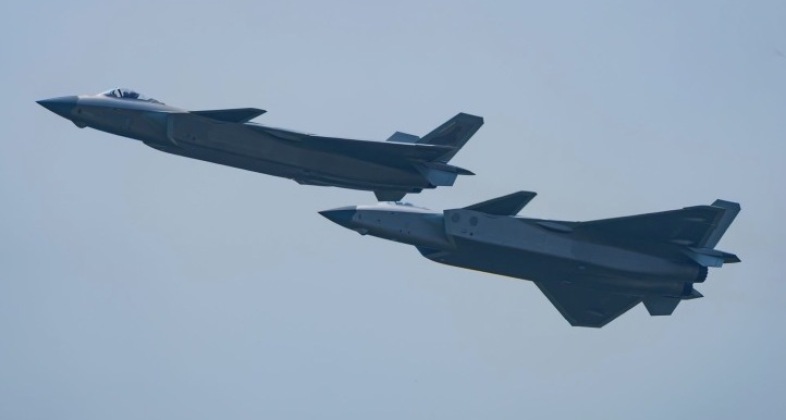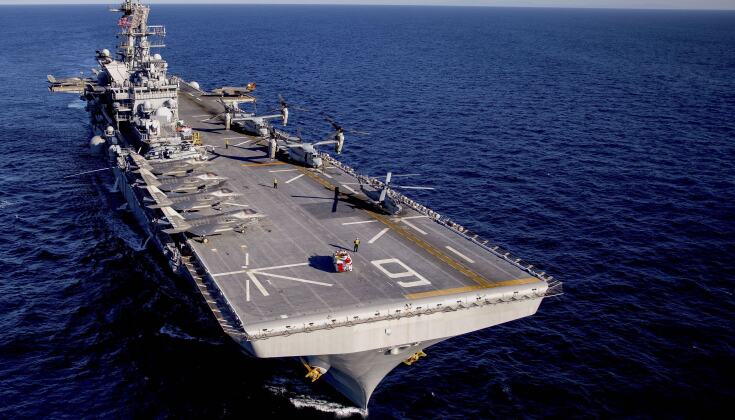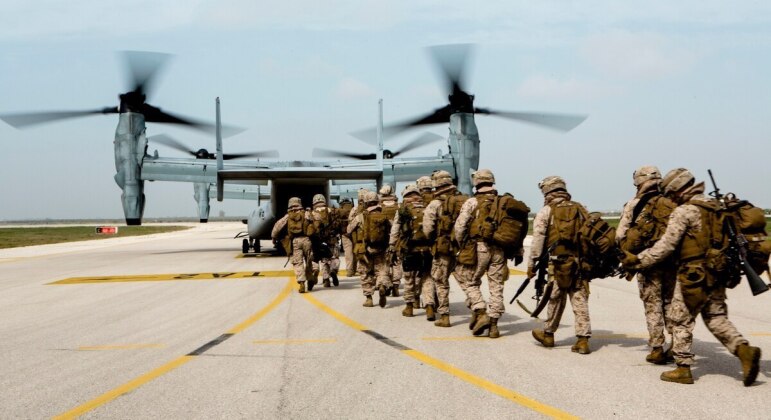News
China’s Growing Firepower Advantage in East Asia is Forcing America to Adopt Asymmetric Tactics
Despite the Pivot to Asia initiative initiated by the Barak Obama administration at the beginning of the 2010s, which saw the bulk of overseas U.S. forces redeployed to the Asia-Pacific region and away from the Middle East and Europe, the balance of power in the Western Pacific has continued to shift decisively in the favour of the Chinese People’s Liberation Army (PLA) over the past decade. This trend is expected to continue into the 2030s, with China’s spending on new military hardware already surpassing that of the U.S., but much more focused in Northeast Asia where American deployments are stretched globally. This at the growth in Chinese acquisitions spending at a rate several times greater than America’s means that the PLA’s conventional advantage in the region by 2025 will likely be tremendous. This shift in the balance of power away from the United States, which had seen the region as an ‘American lake’ since the dismantling of the Japanese Empire in the 1945, is increasingly forcing the U.S. Military to adopt means of countering Chinese forces, which are expected to deploy several times as much firepower in the event of a regional war.

With the balance of power fast shifting, U.S. forces increasingly appear to be considering the adoption of asymmetric tactics to counter the PLA – which is expected to be emphasised more over the coming decade should current power trajectories continue. One result has been the increased questioning of the need for 10-12 100,000 ton nuclear powered supercarriers in the U.S. Navy, which today cost over $13 billion each and are increasingly vulnerable to Chinese long range anti ship weapons. The Navy is instead considering diverting investment towards lighter 40,000 ton carriers which deploy specialised vertical landing capable stealth fighters. Although each of these lighter carriers deploys only a small fraction of the firepower of a supercarrier, the ships will stand a greater chance of getting close enough to an enemy to operate offensively, have a fraction of the crew, and can deploy F-35B fighters well suited to using makeshift runways which is critical when major airfields face a high risk of destruction. A possible shift away from supercarriers is unprecedented in the history of the U.S. Navy, and comes at a time when China is investing in a formidable supercarrier fleet of its own.

The U.S. withdrawal from the Intermediate Range Nuclear Forces (INF) treaty in 2018, with the primary goal of deploying land based ballistic and cruise missiles with medium and intermediate ranges to East Asia, can also be seen as a sign that the military is shifting towards employing asymmetric tactics. Ground based missiles deployed from mobile launchers have long been seen as a way for weaker powers to be able to threaten larger ones. North Korea has been a leading example of this, as was China for several decades until its conventional forces matured over the past 20 years. These assets are not only much more survivable than air bases hosting fighters and bombers, providing an alternative means strike enemy positions which the U.S. Military did not previously see a strong need for, but they also provide the option of taking out enemy airfields and fighters on the ground in a war’s opening stages nullifying an enemy’s air power advantage. Such assets can also be used to neutralise enemy warships, with missiles coming at a very small fraction of the cost of a modern destroyer or frigate and having the potential to disable them with a few well placed hits.

A further sign of an American shift towards an asymmetric strategy has come from the U.S. Marine Corps, which has recently made several moves in this direction. One of the most significant was a plan to make the Corps significantly lighter – abandoning all tanks and a large proportion of its armoured vehicles and artillery systems. This fit will into the Corps’ growing emphasis on stealth operations, in which the Marines would rely heavily on remaining undetected to operate offensively. As Forbes described the position of a Marine commander during such operations: “China has more ships, planes and troops in the area than the United States does. If they spot you, you’re in big trouble.” The new role of Marines will be a far cry from the ‘overwhelming force’ types of offensive operations the Corps are well known for, as seen in operations from Iwo Jima and Okinawa to Korea and Grenada, which reflects the fact that they will not necessarily be expected to benefit from friendly control of the seas and skies when operating in East Asia. Such operations will require a range of new equipment, from radios which can communicate without interception from behind the lines of a high-tech adversary like the PLA – currently being developed under the Protected Forward Communications program – to very mobile artillery and missile systems which can be used to harass enemy warships. The Marines are expected to try to take a toll on Chinese conventional forces with asymmetric and somewhat guerrilla-like tactics, neutralising targets such as surface ships without requiring the American fleet itself to fight a pitched battle. This represents a significant deviation from the means the U.S. Military has favoured since the Second World War when it could reliably count on firepower and technological advantages in battle, and reflects a shifting balance of power both in the region and globally.












